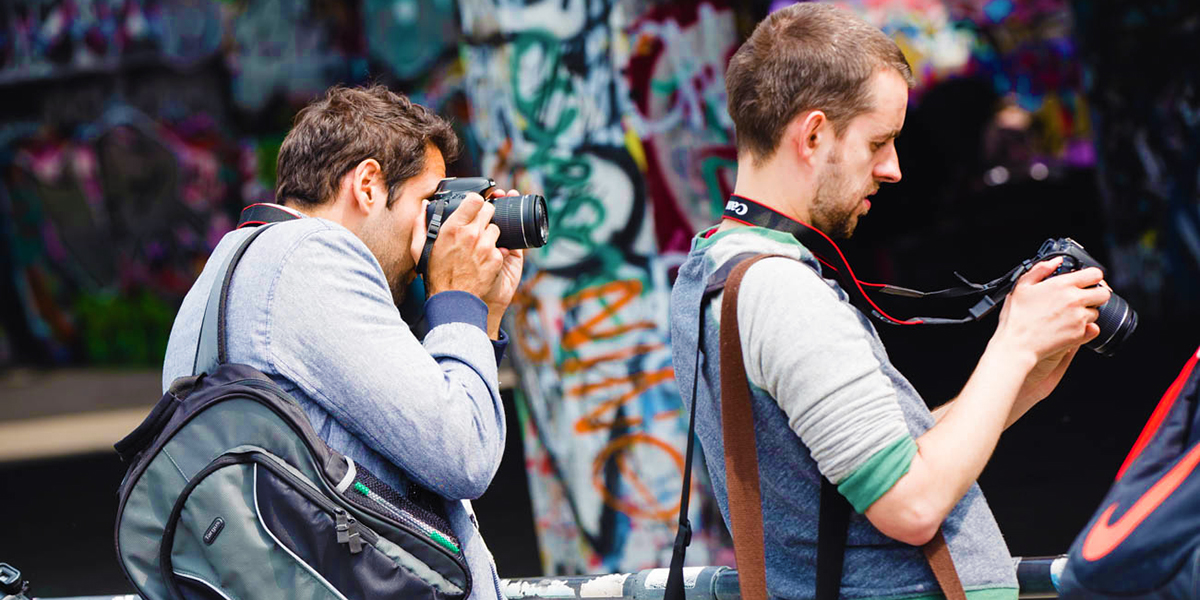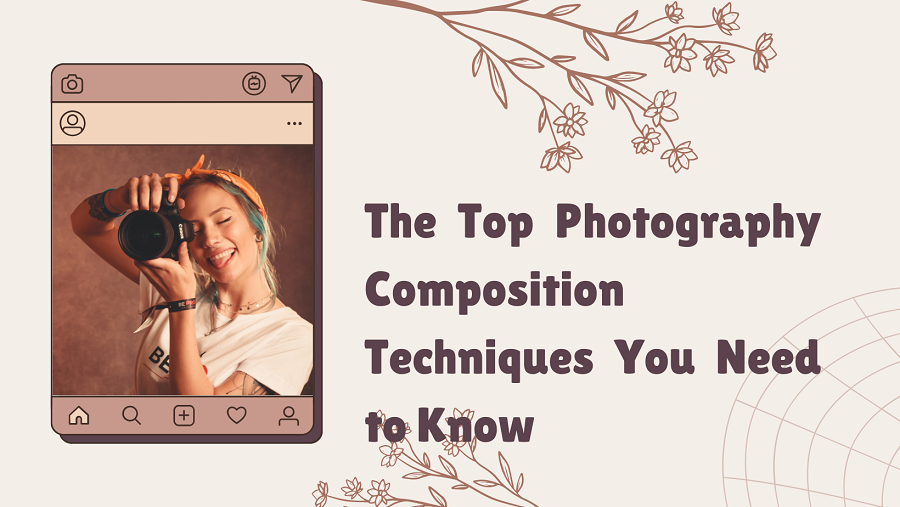Photography is an art form that allows us to capture and freeze a moment in time. But capturing a great photo requires more than just a click of a button. It involves a keen eye for composition, lighting, and subject matter. In this post, we will explore the top photography composition techniques that every photographer needs to know in order to take their images to the next level.
From the rule of thirds to leading lines, symmetry, and contrast, each of these techniques plays a critical role in creating an engaging and visually appealing photography. Whether you're a beginner or a seasoned pro, mastering these techniques will help you to create stunning photographs that capture the essence of the moment.
The Top Photography Composition Techniques You Need to Know
I don't have a personal preference when it comes to photography, but I can definitely provide you with the top photography composition techniques you need to know. Here are some of them:
Also Read This: How to download Imago Images without watermark for free
Rule of thirds:
The rule of thirds is one of the most basic and popular composition techniques in photography. It involves dividing the image into a grid of nine equal parts by drawing two equally spaced horizontal lines and two equally spaced vertical lines.
The idea is to place the subject or points of interest along the intersections or along the lines, rather than in the center of the image. This creates a more balanced and visually appealing composition.
Leading lines
Leading lines are lines that lead the viewer's eye towards the subject or point of interest in the photo. They can be straight or curved, vertical or horizontal, and can be found in natural or man-made settings. Examples of leading lines include roads, paths, bridges, and tree branches.
Framing
Framing is the technique of using objects in the foreground to frame the subject or point of interest. It adds depth and context to the image and can create a sense of isolation or focus on the subject. Examples of framing elements include windows, arches, doorways, and trees.
Symmetry and patterns
Symmetry and patterns can be used to create a sense of balance and harmony in the image. They can be found in natural or man-made settings and can be created through repetition or reflection. Examples of symmetrical and patterned elements include reflections in water, buildings with repeating shapes, and nature scenes with repeating shapes.
Depth of field
Depth of field refers to the range of distances in the image that appear sharp and in focus. It can be used to draw the viewer's attention to the subject and separate it from the background. Shallow depth of field, achieved by using a wide aperture, can blur the background and make the subject stand out, while a deep depth of field, achieved by using a narrow aperture, can keep everything in focus.
Color
Color can be used to create mood, emphasize a subject, or add visual interest to the image. Bold colors can create a sense of energy and excitement, while muted colors can create a sense of calm and serenity. Complementary colors can create a strong visual impact, while analogous colors can create a sense of harmony and unity.
These are just some of the many composition techniques used in photography. By understanding and mastering these techniques, you can create more powerful and visually engaging images.
Also Read This: Teenpreneur Tips: Starting an Etsy Shop Under 18
Leading lines:
Leading lines are a composition technique in photography where lines are used to lead the viewer's eye towards the subject or point of interest in the photo. Leading lines can be straight or curved, vertical or horizontal, and can be found in natural or man-made settings. The purpose of leading lines is to create a sense of depth and guide the viewer's gaze through the image.
Examples of leading lines include roads, paths, bridges, tree branches, and anything else that creates a clear line in the image. By using leading lines, photographers can create a sense of movement or direction, and draw the viewer's attention towards the subject. When composing an image using leading lines, it's important to consider the direction of the lines and how they interact with the subject. Horizontal lines can create a sense of calm or stability, while diagonal lines can create a sense of movement or tension.
Also Read This: Learn How to Download Anything from IMDB App with This Easy Trick
Symmetry and patterns:
Symmetry and patterns are composition techniques in photography that can be used to create a sense of balance, harmony, and visual interest in the image.
Symmetry refers to the balance and similarity between the elements in the image, where one side of the image mirrors the other. Symmetry can be found in both natural and man-made objects such as buildings, bridges, reflections in water, or even the wings of a butterfly. By using symmetry in photography, the photographer can create a sense of balance and harmony in the image.
Patterns, on the other hand, refer to repetition of shapes, colors, or textures in an image. Patterns can be found in nature, architecture, textiles, or anything else that repeats a certain shape or form. By using patterns in photography, the photographer can create a sense of rhythm and movement in the image.
Both symmetry and patterns can be used to draw the viewer's attention to a particular part of the image or to create a sense of depth and dimensionality. When using symmetry and patterns in photography, it's important to consider the placement and framing of the elements in the image, as well as the lighting and colors used to enhance the visual impact of the composition.
Also Read This: Learn How to Download Image from IMDB with This Awe-Inspiring Tool
Framing:
Framing is a composition technique in photography where the photographer uses elements in the foreground of the image to create a natural frame around the subject or point of interest. This can create a sense of depth and add context to the image, as well as draw the viewer's attention towards the subject.
Framing elements can be anything in the foreground of the image that creates a natural frame, such as trees, arches, doorways, or even hands. By using framing in photography, the photographer can create a sense of isolation or focus on the subject, as well as add a sense of depth and dimensionality to the image.
When using framing in photography, it's important to consider the placement and framing of the elements in the image, as well as the lighting and colors used to enhance the visual impact of the composition. Framing can also be used to create a sense of intimacy or to suggest that the viewer is peeking into a private or secluded space. Overall, framing is a powerful composition technique that can add depth, context, and visual interest to an image.
Also Read This: Here’s the Best Way to Download Video from X
Depth of field:
Depth of field is a composition technique in photography that refers to the range of distances in the image that appear sharp and in focus. It is determined by the aperture setting of the camera and can be used to draw the viewer's attention to the subject and separate it from the background.
Shallow depth of field, achieved by using a wide aperture (small f-number), creates a narrow plane of focus where only a small portion of the image is in focus. This technique is often used in portrait photography to isolate the subject from the background and create a pleasing bokeh effect.
In contrast, a deep depth of field, achieved by using a narrow aperture (large f-number), keeps everything in focus from the foreground to the background. This technique is often used in landscape photography to capture a large depth of field and show a sharp focus throughout the entire image.
When using depth of field in photography, it's important to consider the placement and focus of the subject, as well as the overall composition of the image. Depth of field can be used to create a sense of separation between the subject and the background, as well as to add depth and dimensionality to the image. It's a powerful tool in photography that can be used to control the viewer's focus and create a more engaging and visually interesting image.
Also Read This: Learn How to Save a Gif on Android from Twitter With This Simple Tool
Contrast:
Contrast is a composition technique in photography that refers to the difference between the light and dark areas in the image. Contrast can be used to create visual interest, add depth and dimensionality to the image, and draw the viewer's attention towards the subject.
In photography, contrast can be created in a number of ways. One way is by adjusting the exposure settings of the camera to make the highlights brighter and the shadows darker. Another way is by using lighting to create dramatic shadows and highlights in the image. Contrast can also be created by combining elements of different colors or textures that stand out from each other.
When using contrast in photography, it's important to consider the overall composition of the image, the placement of the subject, and the lighting conditions. High contrast images can create a sense of drama and tension, while low contrast images can create a more subdued and calming effect. By playing with contrast, photographers can create a wide range of moods and emotions in their images, and use it to draw the viewer's attention towards the subject.
Also Read This: Mic Magic: Playing Spotify Through Your Microphone – Step by Step
Golden ratio:
The golden ratio is a composition technique in photography that is based on the mathematical ratio of 1:1.618. It is also known as the "Divine Proportion" and has been used for centuries in art, architecture, and design to create visually pleasing and harmonious compositions.
In photography, the golden ratio can be used to determine the placement of the subject and the overall composition of the image. The golden ratio grid is a tool that photographers can use to align elements in the image along the lines and intersections of the grid, creating a sense of balance and harmony in the composition.
The golden ratio can also be used to create a sense of movement and flow in the image, with the subject placed off-center and leading the viewer's eye along the lines of the grid towards other elements in the image.
While the golden ratio is a powerful composition tool, it's important to note that it's not a strict rule and should be used in combination with other composition techniques to create visually engaging and interesting images. The goal of any composition technique, including the golden ratio, is to draw the viewer's attention towards the subject and create a sense of balance and harmony in the image.
Also Read This: Views Vanguard: Proven Strategies to Get More Views on eBay
FAQ
What is the rule of thirds in photography composition?
The rule of thirds is a basic composition technique where the image is divided into a 3x3 grid, and the main subject is placed along one of the lines or at an intersection. This creates a more balanced and visually appealing image.
How can leading lines be used in photography composition?
Leading lines are lines within the image that draw the viewer's eye towards the main subject. This can be a road, a fence, a river, or any other line within the scene. By using leading lines, you can create a more dynamic composition and draw attention to the main subject.
What is framing in photography composition?
Framing is a technique where you use elements within the scene to frame the main subject. This could be a door frame, a window frame, or even a natural frame such as a tree branch. Framing can help to draw attention to the main subject and create a more interesting composition.
How can depth of field be used in photography composition?
Depth of field is the range of distance in a photograph that appears to be in focus. By adjusting the depth of field, you can create a more dramatic composition by blurring the background or foreground and drawing attention to the main subject.
What is the golden ratio in photography composition?
The golden ratio is a mathematical formula that is often used in photography composition. It is based on the ratio of 1:1.618 and can be used to create a more balanced and harmonious composition. By placing the main subject at the intersection of the golden ratio, you can create a more visually appealing image.
Conclusion
In conclusion, understanding and mastering composition techniques is critical for creating engaging and visually appealing photographs. The rule of thirds, leading lines, symmetry and patterns, framing, depth of field, contrast, and the golden ratio are just a few of the many techniques that photographers can use to create stunning compositions.
By experimenting with these techniques and finding ways to combine them, photographers can create unique and powerful images that capture the essence of the moment. Whether you are a beginner or an experienced photographer, taking the time to learn and practice these techniques can help you to take your photography to the next level.















